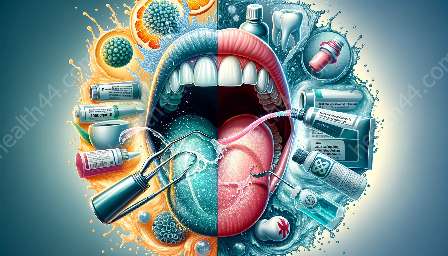Chlorhexidine mouthwash is a popular oral hygiene product known for its powerful antimicrobial properties. This mouthwash plays a crucial role in combating oral bacteria, promoting oral health, and preventing dental issues. In this comprehensive guide, we will explore the science behind the antimicrobial properties of chlorhexidine mouthwash, its benefits, and its effectiveness in maintaining a healthy oral environment.
Understanding Chlorhexidine Mouthwash
Chlorhexidine mouthwash is an antiseptic solution commonly used to control plaque and gingivitis, as well as to prevent and treat various oral infections.
It works by disrupting the cell membrane of bacteria, resulting in their destruction. Chlorhexidine mouthwash is available in different concentrations and formulations, and it is often recommended for individuals with a high risk of oral infections, such as those undergoing dental procedures or with compromised immune systems.
Antimicrobial Properties
The antimicrobial properties of chlorhexidine mouthwash are attributed to its ability to target and eliminate a wide range of oral pathogens. This includes bacteria, viruses, and fungi commonly found in the oral cavity.
- Bacterial Control: Chlorhexidine mouthwash effectively controls the growth and spread of bacteria in the mouth. It is particularly effective against plaque-forming bacteria, which are responsible for dental decay and gum disease.
- Viral Inactivation: Studies have shown that chlorhexidine has the ability to inactivate certain viruses, providing an additional layer of protection against viral oral infections.
- Fungal Elimination: In cases of oral candidiasis (thrush), chlorhexidine mouthwash has been found to be effective in eliminating the causative fungus, thereby aiding in the treatment of the condition.
Benefits of Chlorhexidine Mouthwash
Using chlorhexidine mouthwash offers several benefits in terms of oral health and hygiene:
- Reduced Plaque Formation: Regular use of chlorhexidine mouthwash helps reduce the formation of plaque on teeth and gums, thereby lowering the risk of dental caries and periodontal disease.
- Gingivitis Management: It is effective in managing and preventing gingivitis, a common gum disease characterized by inflammation and bleeding of the gums.
- Post-Operative Care: Chlorhexidine mouthwash is often recommended after dental procedures to prevent post-operative infections and promote healing.
- Periodontal Support: For individuals with periodontal disease, chlorhexidine mouthwash can provide additional support in controlling the progression of the disease.
Effectiveness and Proper Usage
The effectiveness of chlorhexidine mouthwash depends on proper usage and adherence to recommended guidelines:
- Duration of Use: Typically, chlorhexidine mouthwash is used for a limited duration as directed by dental professionals to avoid potential side effects and the development of bacterial resistance.
- Correct Application: It is essential to follow the instructions for proper rinsing and usage. Usually, a specific quantity is measured and swirled in the mouth for a designated amount of time before spitting out.
- Complementary Oral Hygiene: Chlorhexidine mouthwash should be considered as an adjunct to regular brushing and flossing, rather than a substitute for these essential oral hygiene practices.
Conclusion
The antimicrobial properties of chlorhexidine mouthwash make it an invaluable tool in maintaining and promoting oral health. Its ability to target a wide range of oral pathogens, coupled with its benefits in preventing and managing dental issues, underscores its significance in oral hygiene practices. When used as directed and in combination with other dental care measures, chlorhexidine mouthwash can contribute to a healthy and balanced oral environment.









